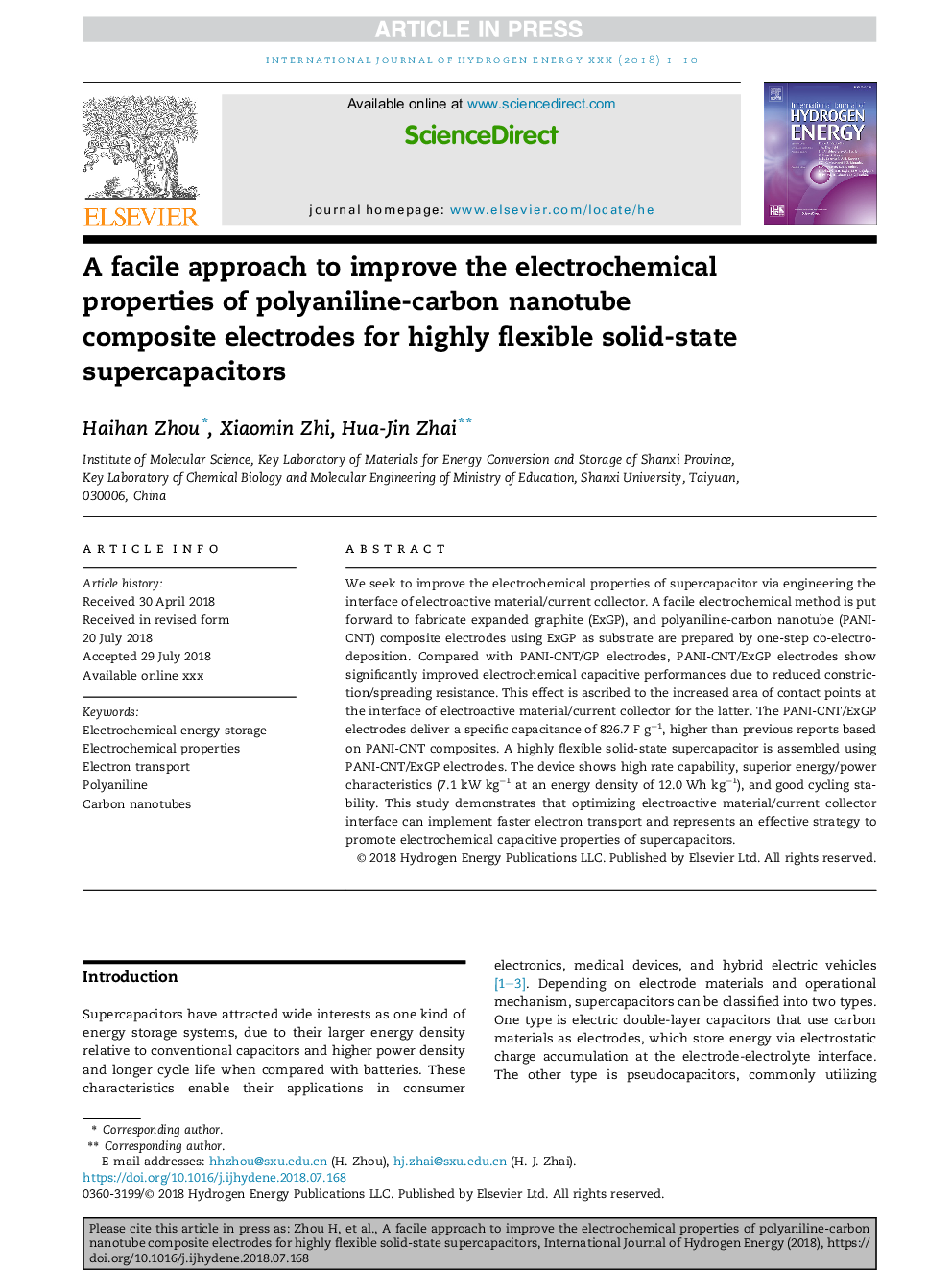| Article ID | Journal | Published Year | Pages | File Type |
|---|---|---|---|---|
| 10154645 | International Journal of Hydrogen Energy | 2018 | 10 Pages |
Abstract
We seek to improve the electrochemical properties of supercapacitor via engineering the interface of electroactive material/current collector. A facile electrochemical method is put forward to fabricate expanded graphite (ExGP), and polyaniline-carbon nanotube (PANI-CNT) composite electrodes using ExGP as substrate are prepared by one-step co-electrodeposition. Compared with PANI-CNT/GP electrodes, PANI-CNT/ExGP electrodes show significantly improved electrochemical capacitive performances due to reduced constriction/spreading resistance. This effect is ascribed to the increased area of contact points at the interface of electroactive material/current collector for the latter. The PANI-CNT/ExGP electrodes deliver a specific capacitance of 826.7Â FÂ gâ1, higher than previous reports based on PANI-CNT composites. A highly flexible solid-state supercapacitor is assembled using PANI-CNT/ExGP electrodes. The device shows high rate capability, superior energy/power characteristics (7.1Â kWÂ kgâ1Â at an energy density of 12.0Â Wh kgâ1), and good cycling stability. This study demonstrates that optimizing electroactive material/current collector interface can implement faster electron transport and represents an effective strategy to promote electrochemical capacitive properties of supercapacitors.
Keywords
Related Topics
Physical Sciences and Engineering
Chemistry
Electrochemistry
Authors
Haihan Zhou, Xiaomin Zhi, Hua-Jin Zhai,
